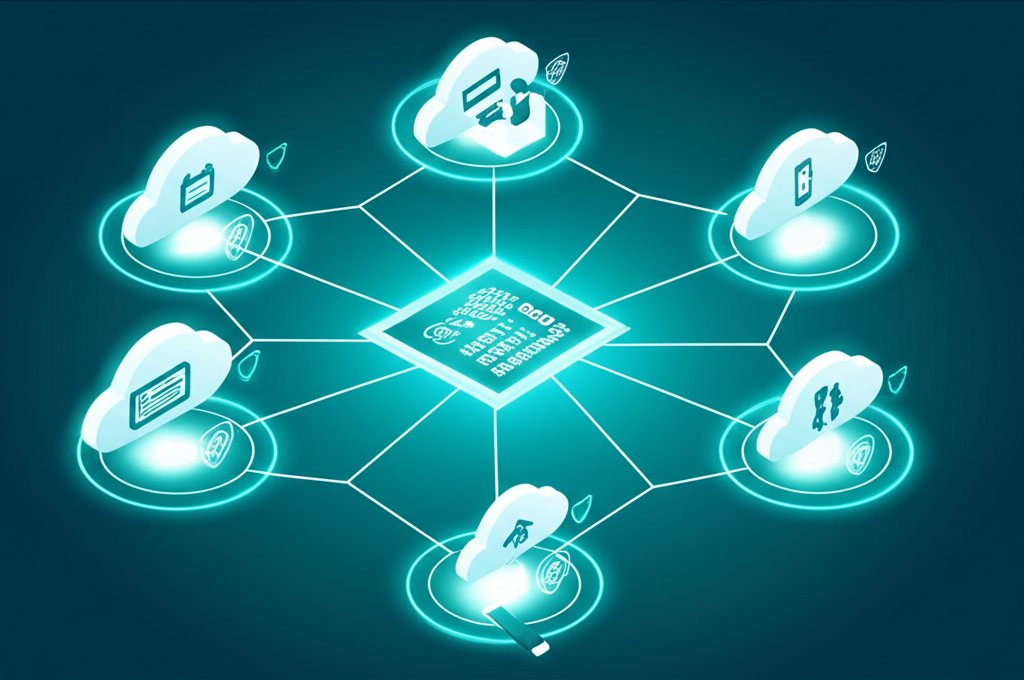As a small business owner, you likely understand the importance of securing your digital assets, whether those are on-premise or within your cloud environment. The term “penetration test” often comes up as a critical tool, a proactive measure to uncover vulnerabilities, including hard-to-find zero-day vulnerabilities, before malicious actors exploit them. You invest resources, expecting a comprehensive assessment that significantly enhances your defenses. Yet, a common frustration arises: despite conducting the test, many businesses don’t see the tangible security improvements they anticipated, leading to questions about how to get effective penetration testing results and the true value of their investment.
This scenario, where the promise of a penetration test falls short, is unfortunately prevalent. It leaves businesses feeling vulnerable, even after taking a seemingly proactive step. This article aims not to alarm you, but to empower you with a clear understanding of common penetration test failures for SMBs. More importantly, we’ll equip you with practical strategies to avoid these pitfalls and ensure your cybersecurity efforts lead to genuine, measurable enhancements. We’ll explore why tests sometimes miss critical flaws, delve into issues like treating them as mere compliance checklists, and address the crucial need for effective follow-through. Our goal is to transform your penetration testing approach, ensuring your cybersecurity investments truly contribute to a stronger, more resilient security posture.
While the very concept of penetration testing is to find weaknesses, sometimes even well-intentioned tests can overlook critical vulnerabilities or struggle to deliver actionable insights. To truly enhance your security, it’s essential to understand not just these shortcomings, but also how to overcome them. We’ll guide you through defining clear objectives, selecting the right testing partners, and establishing robust remediation plans. Let’s dive into some frequently asked questions that will shed light on these issues and provide concrete steps to take control of your digital security.
Table of Contents
- What exactly is a penetration test, and why is it important for small businesses?
- Why do so many small businesses view penetration tests as just a “checklist item”?
- How can unclear goals and scope lead to ineffective penetration tests?
- Why is a “one-and-done” approach to security testing insufficient?
- What happens if a small business ignores the penetration test report?
- How does technical jargon in reports hinder security improvement for non-experts?
- What are the risks of choosing the wrong penetration test provider?
- How can a small business define clear objectives for their penetration test?
- What should small businesses look for when choosing a penetration testing partner?
- How can small businesses create an effective remediation plan for vulnerabilities?
- Beyond annual tests, what ongoing security practices should small businesses adopt?
Basics: Understanding Penetration Test Failures
What exactly is a penetration test, and why is it important for small businesses?
A penetration test, often referred to as a “pen test,” is a controlled, simulated cyberattack against your systems, networks, or critical API-driven applications. Its purpose is to proactively identify vulnerabilities before malicious actors can exploit them. Essentially, you’re engaging an ethical hacker to attempt to breach your digital defenses, mirroring the tactics of a real attacker.
For small businesses, this is not just important, it’s critical. You are often just as attractive a target as larger enterprises, but typically with fewer dedicated security resources. A pen test helps you uncover weaknesses that could lead to devastating data breaches, significant financial losses, or irreparable reputational damage. By proactively identifying and addressing these flaws, you not only strengthen your security posture but also gain invaluable peace of mind, knowing you’ve taken a crucial step in safeguarding the sensitive information your customers entrust to you.
Why do so many small businesses view penetration tests as just a “checklist item”?
Unfortunately, a common pitfall for small businesses is viewing penetration tests primarily as a compliance formality rather than a strategic security investment. They might conduct a test simply to “tick a box” for an insurance policy, a client contract, or a specific industry regulation. This compliance-driven mindset often prioritizes the cheapest and quickest option, focusing solely on receiving a report without fully engaging with its deeper implications or understanding its true value.
This approach fundamentally misses the objective of a penetration test. While a compliance-focused test might satisfy an auditor, it often fails to uncover the specific, real-world threats that target your unique business. It can lead to a narrow scope, limited engagement, and ultimately, a missed opportunity for the tangible security improvements that a comprehensive, risk-focused assessment could provide. Such an oversight can unfortunately result in surprisingly basic vulnerabilities remaining unaddressed, which could have been easily avoided with a more strategic perspective.
How can unclear goals and scope lead to ineffective penetration tests?
Without clearly defined goals and scope, a penetration test becomes a shot in the dark, risking the omission of critical vulnerabilities. If objectives are vague, testers might inadvertently concentrate on less critical areas, or you might—due to budget constraints or concerns about operational disruption—exclude vital systems from the scope. This leaves your most valuable digital assets, your “crown jewels,” dangerously exposed.
Understanding that real-world attackers operate without predefined boundaries is crucial. If your test’s scope is too narrow or fails to encompass your true risk landscape, the assessment will not accurately simulate a genuine attack. You might receive a report stating “no critical findings,” but it’s vital to remember this applies only within the limited scope that was tested, not to the entirety of your business’s security posture. It’s akin to meticulously checking if your front door is locked while leaving all your windows wide open.
Why is a “one-and-done” approach to security testing insufficient?
Cybersecurity is not a static challenge; it’s a dynamic, continuously evolving landscape. Adopting a “one-and-done” approach to penetration testing, perhaps conducting it only annually, provides merely a snapshot of your security posture at a specific moment in time. New vulnerabilities, software updates, configuration changes, and sophisticated attack methods appear daily, rapidly rendering past test results outdated.
Consider this analogy: you wouldn’t expect a single health check-up at age 20 to guarantee lifelong wellness. Similarly, digital security demands continuous attention. While a single, well-executed test offers significant value, it cannot protect you from threats that emerge weeks or months later. Effective penetration testing must be an integral part of an ongoing, comprehensive security strategy, not a solitary event.
What happens if a small business ignores the penetration test report?
Receiving a penetration test report is merely the initial step; the true value and security enhancement derive from actively addressing its findings. Ignoring the report is comparable to a doctor diagnosing a serious illness and the patient simply filing away the diagnosis without pursuing treatment. Identified vulnerabilities remain open, inviting entry points for attackers, even if you are now aware of their existence.
Often, small businesses face challenges with remediation due to limited dedicated resources, insufficient budget allocation for fixes, or a lack of clear ownership for follow-up tasks. An unaddressed vulnerability persists as a critical weakness in your defenses. The most sophisticated penetration test becomes meaningless if its findings are left without action, ultimately leaving your business as exposed as it was before the assessment. This risk is particularly pronounced for organizations that believe their cloud environments are inherently secure, only to find that penetration tests sometimes miss cloud vulnerabilities due to a lack of specific focus or expertise.
Intermediate: Deep Diving into Pitfalls & Solutions
How does technical jargon in reports hinder security improvement for non-experts?
Many penetration test reports are authored by technical specialists, primarily for other technical specialists, and are frequently laden with highly specialized jargon. For small business owners who typically lack a dedicated in-house IT security team, deciphering these reports can be akin to reading a foreign language. This linguistic barrier makes it exceedingly difficult to fully grasp the actual risks posed to your business or to effectively prioritize which fixes are genuinely critical.
While a report might meticulously detail a “cross-site scripting vulnerability” or “improper access control,” the vital question remains: what does this specifically mean for your customer data, your website’s integrity, or your daily operations? Without clear explanations of the business impact, coupled with actionable, non-technical remediation advice, such reports often become overwhelming documents that are quickly set aside. A truly valuable penetration test report excels at translating complex technical findings into understandable business risks and providing practical, prioritized steps that you can realistically implement.
What are the risks of choosing the wrong penetration test provider?
Selecting an unsuitable penetration testing provider can entirely sabotage your security efforts, resulting in wasted financial investment and, more dangerously, a false sense of security. Some less scrupulous vendors may prioritize generating a high volume of low-impact vulnerabilities—often termed “noise”—primarily to make their report appear extensive, rather than concentrating on the genuine business risks that are most pertinent to your operations.
Furthermore, certain providers might erroneously present automated vulnerability scans as comprehensive penetration tests. It’s crucial to understand that these automated tools lack the critical element of manual exploitation and the human ingenuity characteristic of a true ethical hacker. A provider who fails to comprehend the unique constraints and operational challenges of small businesses will not deliver tailored, actionable advice, leaving you with generic findings that do not adequately address your specific security posture or help you make informed decisions.
How can a small business define clear objectives for their penetration test?
Before even considering engaging a penetration tester, it is imperative to sit down and clearly define your “why.” What are your most critical assets that require protection? Is it sensitive customer data, the availability and integrity of your e-commerce platform, or the resilience of your internal network? What is the overarching objective: validating the effectiveness of your current security controls, fulfilling a specific compliance mandate, or identifying the most critical, exploitable risks to your business?
Develop a concise, prioritized list of your most valuable digital assets. Contemplate the potential financial, reputational, or operational damage that would result from their compromise. Crucially, openly discuss these explicit objectives with your chosen provider. This level of clarity ensures that the penetration test is precisely focused on what genuinely matters to your business, thereby yielding the most relevant and impactful results.
What should small businesses look for when choosing a penetration testing partner?
When selecting a penetration testing partner, resist the temptation to simply choose the cheapest option; quality, expertise, and relevance are paramount. Prioritize reputable providers with demonstrated experience working specifically within the small business ecosystem. Always request references and meticulously verify their credentials and certifications. Critically, inquire about their reporting methodology: do they translate complex technical findings into clear, understandable business risks? Do they offer a comprehensive debriefing session to explain the report in plain language and provide practical, actionable remediation advice?
An effective security partner will dedicate time to understand your unique business model, tailor the test scope to your specific risk profile, and guide you thoroughly through the findings. They will not merely deliver a technical document; rather, they will help you transform insights into decisive action, thereby empowering you to make informed and strategic decisions regarding your security posture.
How can small businesses create an effective remediation plan for vulnerabilities?
An effective remediation plan is not an afterthought; it should be initiated even before the penetration test commences. Proactively allocate essential resources—including time, budget, and personnel—specifically for addressing identified vulnerabilities. Do not defer the assignment of responsibilities until the report arrives. Instead, establish clear ownership for each vulnerability fix and set realistic deadlines. For example, determine if your internal web developer can address website flaws, or if a specialized external consultant is required.
Consider adopting a collaborative approach, often referred to as “purple teaming,” where your internal IT team (if available) works directly with the testing team. This integrated method allows your internal staff to gain valuable insights as vulnerabilities are discovered, facilitating more efficient and informed implementation of fixes. Crucially, prioritize remediation efforts based on the actual risk and potential impact to your specific business, rather than solely on generic technical severity scores. Always address the most significant threats first to maximize your security improvement.
Advanced: Continuous Security & Leveraging Results
Beyond annual tests, what ongoing security practices should small businesses adopt?
While a comprehensive annual penetration test offers undeniable value, it’s crucial to understand that security is a continuous, evolving process, not a one-time event. Supplement these formal tests with more frequent, lighter-touch security checks, such as regular vulnerability assessments or automated scanning. Fundamentally, integrate testing with core security measures: ensure mandatory employee cybersecurity training (emphasizing phishing awareness!), enforce strong password policies (including multi-factor authentication, which can be enhanced with passwordless authentication!), and diligently keep all software, operating systems, and applications updated.
Additionally, consider implementing continuous monitoring for unusual network activity, often a key component of a Zero Trust security model. Regularly review and refine your access controls and broader security practices. For resource-constrained small businesses, even these seemingly simple, consistent actions can significantly enhance your security posture between formal tests, collectively creating a robust, multi-layered defense against the ever-evolving landscape of cyber threats.
Related Questions You Might Have
- What’s the difference between a vulnerability scan and a penetration test?
- How much does a penetration test typically cost for a small business?
- Can my internal IT team perform a penetration test?
Conclusion
When approached strategically and thoughtfully, penetration testing stands as an incredibly powerful tool for small businesses committed to strengthening their cybersecurity defenses. It transcends merely identifying flaws; it’s about gaining a profound understanding of your unique risks and proactively constructing a more resilient digital environment.
By consciously moving beyond a superficial “checklist” mentality, meticulously defining your objectives, selecting the right strategic partners, and diligently following through on every aspect of remediation, you can genuinely transform penetration test results into concrete, measurable improvements in your security posture. Do not allow your valuable investment to be wasted. Revisit and refine your approach to penetration testing, integrate these actionable strategies, and decisively take control of your digital security. The outcome will be not only enhanced protection but also the profound peace of mind that comes from knowing you’ve done your utmost to secure your business in our increasingly complex and challenging digital world.




